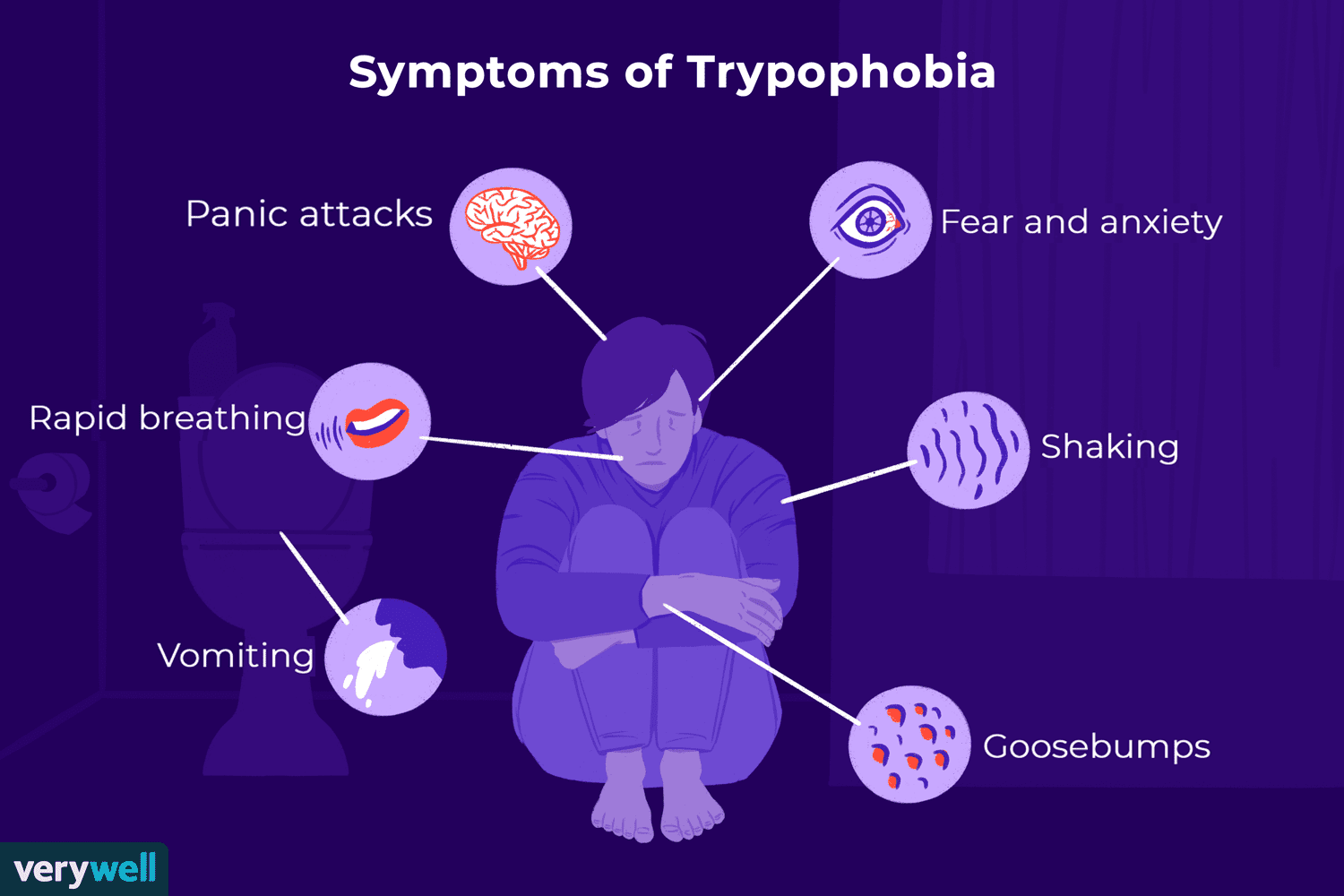Simply put, Trypophobia is an aversion to the sight of irregular patterns or clusters of small holes or bumps. We have to say it is not officially recognized as a mental disorder. Yet, it may be diagnosed as a specific phobia if excessive fear and distress occur.
While it is not listed in the DSM-5, it would fall under the broad classification of specific phobias as long as symptoms are persistent, excessive, and can lead to significant impairment.
What is it?
As we said before, Trypophobia is a fear of holes. Typically, it is characterized by an aversion towards clusters or small holes.
This is a specific phobia, a condition that is often characterized by a persistent and excessive fear of an object or situation that poses no actual, or very little, danger.
People who have it, may express disgust or fear when looking at images or objects containing irregular patterns.
![]()
What Triggers it?
The condition refers to fear or repulsion to patterns of holes. People often find specific images of clusters or small, irregular holes triggering their symptoms. Here are some examples.
– soap bubbles
– coral
– sponges
– honeycomb
– water condensation
– beehives
– pomegranates
– strawberries
– bubbles
– sea sponges
– seed pots
– clusters of eyes in insects
How common is it?
According to some studies, Trypophobia affects 17% of children and adults, which means one in six people may have it. The disorder is fairly new, having being named in 2005 for the first time.
The condition came to the public’s eye when American Horror Story: Cult, featured a character who had the condition. And now, more and more people are making the news because of their negative reaction to clusters of tiny camera lenses on certain smartphones.
Here is a fun fact: Kendal Jenner confessed she suffers from the condition.
What causes it?
Research continues to investigate what may cause this condition and strong aversion to irregular patterns.
According to some studies, people may identify the pattern as a treat, with the identification initiating a survival instinct. Other studies suggest it is a response to alert a person to the presence of parasites or other infectious diseases.
People affected by Trypophobia may perceive clusters of holes as either symptoms of parasites, such as fleas being present on the skin, or as the spread of pathogens.
![]()
And then there are research and studies suggesting it is a type of specific phobia referring to an intense reaction to something that poses little or no danger. People even recognize and realize that their reaction is irrational.
In any case, more research is needed on the subject to support any idea or theory.
Signs and symptoms
The most common sign is avoidance of triggers, which means images or objects associated with clustered holes.
Symptoms may present after encountering a trigger or something similar to a trigger. The symptoms include:
– feelings of disgust, fear, and/or discomfort
– goosebumps
– skin itching
– skin crawling
– nausea
– panic attacts
– sweating
Can you diagnose it?
We said before that Trypophobia is not currently listed in the American Psychiatric Association’s DSM-5 as a mental disorder. This means it is not a diagnosable condition.
Yet, it may be acknowledged by some mental health professionals as a specific phobia if the symptoms and signs are persistent and excessive.
Generally, the phobias is based on the symptoms of an individual, along with a review of the medical, social, and family history.
In some cases, there might be laboratory tests like urine samples and blood test, or brain imagine. This is so that doctors can rule out other conditions that might impact the mental health of the individual.
Can you cure it?
Or, is there a cure for Trypophobia? Well, if it affects your ability to engage in certain activities or enjoy life, you can try exposure therapy. This type of therapy gradually exposes you to Trypophobia triggers, helping you to manage your reactions.
![]()
Another option is cognitive behavioral therapy, which should help you change your perceptions and responses to situations that trigger the condition.
Anti-anxiety medications do not help people with specific phobia disorders.
While there is no specific treatment to Trypophobia, some treatments might help and have varied success rate.
Are there any complications?
In some rare cases, Trypophobia may affect your ability to socialize, work, or live a normal life. You may experience increased stress, irritability, insomnia, sleep problems, depression, and panic attacks.
Can you prevent it?
There are relaxation techniques like meditation, mindfulness, or visualizing soothing images that can help individuals avoid feelings of Trypophobia.



